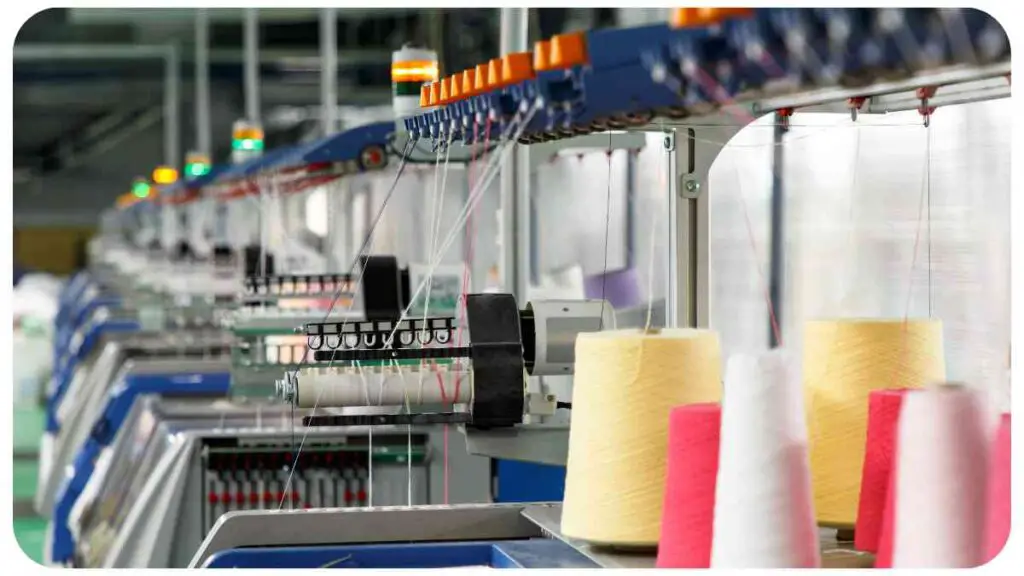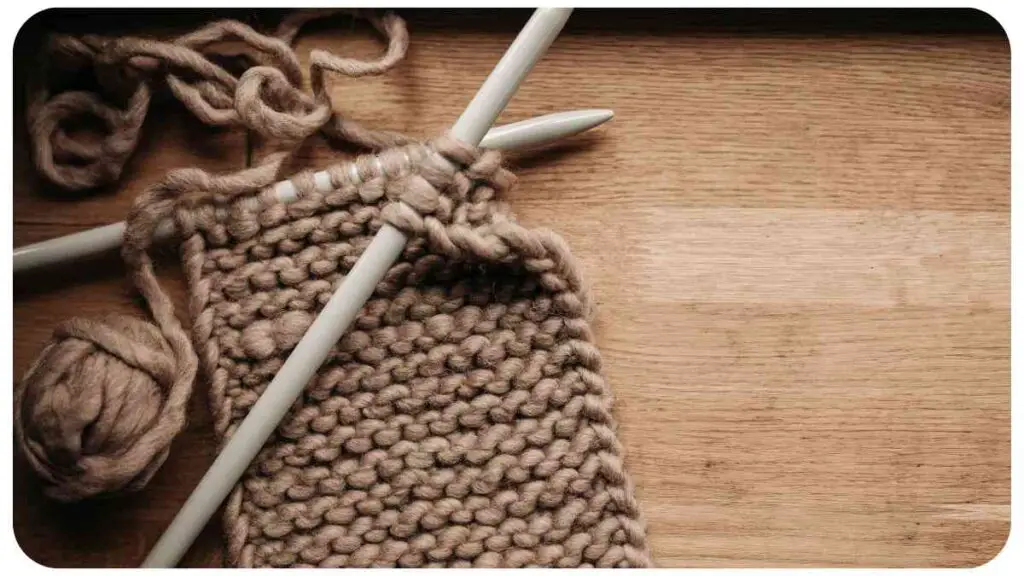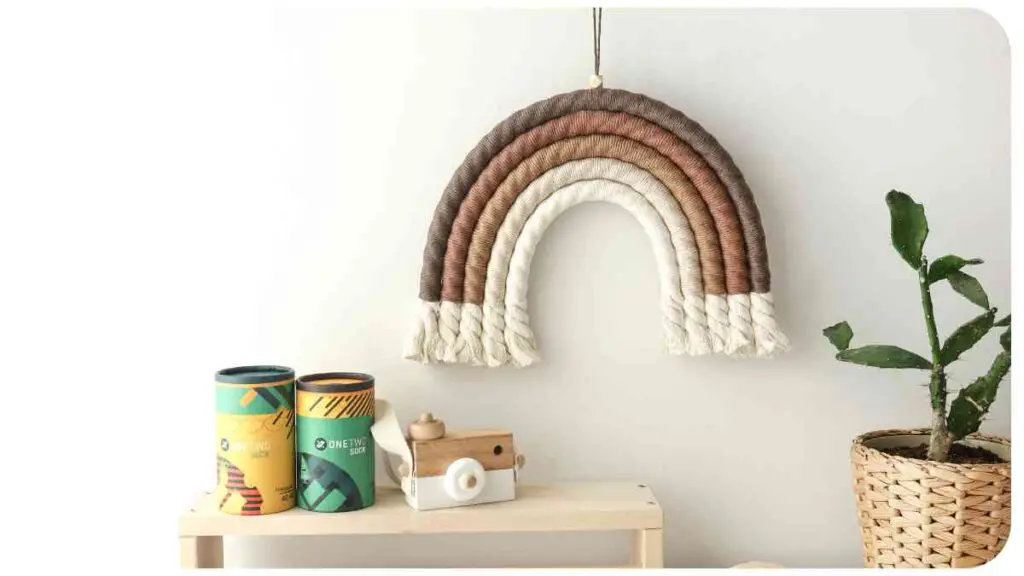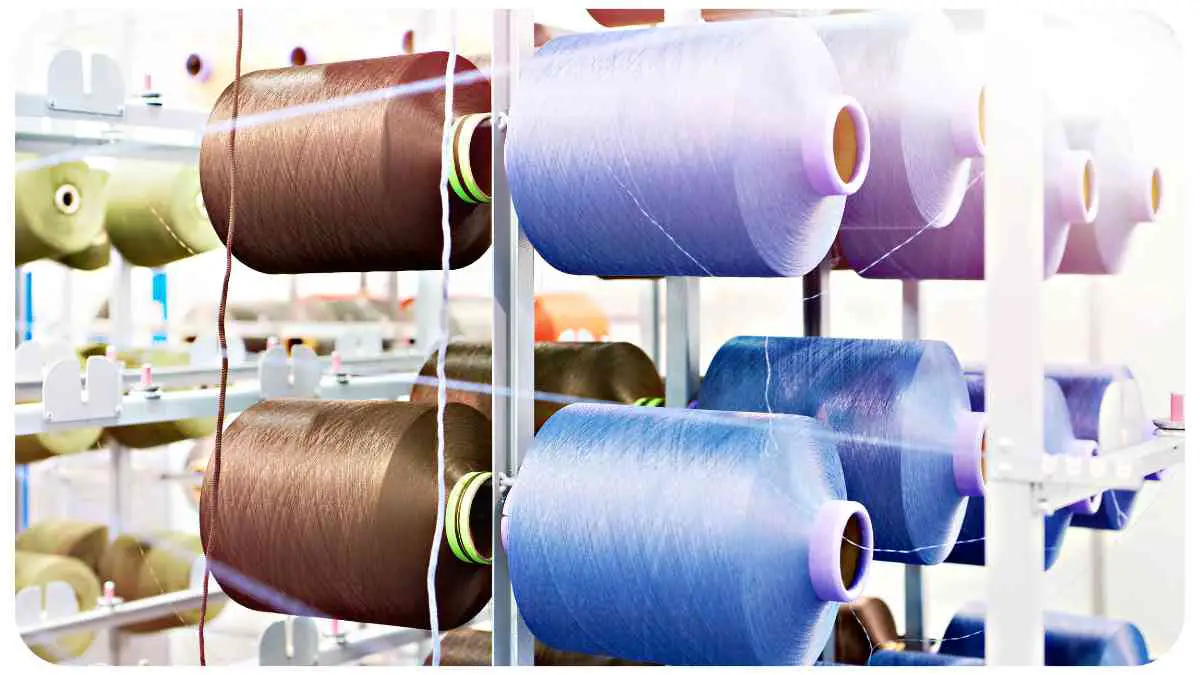Welcome to the world of knitting machines! In this comprehensive guide, we will demystify the process of understanding and using a knitting machine. Whether you are a beginner or an experienced knitter, this article will equip you with the knowledge and skills to unlock the full potential of your machine.
Throughout this guide, we will share our expertise and personal experiences to provide valuable insights, tips, and practical advice. Let’s dive in and unravel the secrets of knitting machines together.
| Takeaways |
|---|
| Choosing the right knitting machine is essential for your knitting projects. |
| Regular maintenance ensures optimal performance and longevity of your knitting machine. |
| Mastering basic and advanced knitting techniques opens up a world of creative possibilities. |
| Experiment with different yarns, colors, and stitch patterns to create unique and personalized designs. |
| Take breaks, stretch exercises, and maintain proper hand posture to prevent fatigue and hand strain. |
| Explore further resources to expand your knowledge and enhance your knitting machine skills. |
2. Choosing the Right Knitting Machine
Before delving into the intricacies of operating a knitting machine, it’s essential to select the right one suited to your needs and skill level. Knitting machines come in various types, such as manual or electronic, flatbed or circular. Consider factors like budget, project requirements, and personal preferences when making your decision.
“If you’re ready to explore the wonders of knitting with bamboo yarn, our article The Ultimate Guide to Knitting with Bamboo Yarn provides a comprehensive resource. Learn about the benefits, techniques, and best practices for working with this eco-friendly fiber.
Table: Popular Knitting Machine Brands
| Brand | Types of Knitting Machines |
| Brother | Manual, Electronic, Flatbed, Circular |
| Silver Reed | Manual, Electronic, Flatbed, Circular |
| Studio | Manual, Electronic, Flatbed, Circular |
| Singer | Manual, Electronic, Flatbed |
| Passap | Manual, Electronic, Flatbed, Circular |
Remember, each brand offers different features and functionalities, so research thoroughly and read reviews before making a purchase.
3. Getting to Know Your Knitting Machine

Types of Knitting Machines
Knitting machines come in various types, each designed for specific purposes. The most common types include flatbed and circular knitting machines. Understanding the differences between these machines is crucial for getting started.
Table: Types of Knitting Machines
| Type of Knitting Machine | Description |
| Flatbed Knitting Machine | These machines have a flat surface where the knitting happens. They are suitable for knitting fabrics with straight edges, such as scarves, sweaters, and blankets. |
| Circular Knitting Machine | These machines feature a cylinder and specialized circular needles that produce seamless tubes of fabric. They are perfect for creating items like hats, socks, and sleeves. |
Understanding Knitting Machine Parts
To become familiar with your knitting machine, it’s important to understand its various parts. Here are some key components you should know:
Table: Knitting Machine Parts
| Knitting Machine Part | Description |
| Bed | The main frame of the machine where the needles are positioned. |
| Carriage | The moving part that holds the yarn and glides across the bed, enabling the knitting process. |
| Stitch Dial | The mechanism responsible for selecting the desired stitch type and pattern. |
| Tension Dial | The control that adjusts the tightness or looseness of the stitches. |
| Yarn Feeder | The device that feeds the yarn into the machine during knitting. |
| Needle Retainer Bar | The bar that holds the needles securely in place. |
| Claw Weight | A weight that helps maintain tension on the yarn while knitting. |
| Knitting Claw | The component that transfers the stitches from one needle to another. |
Knowing these parts will come in handy when setting up your machine and troubleshooting any issues that may arise during the knitting process.
Calling all crochet enthusiasts! Discover 10 amazing crochet patterns for beginners in our article 10 Amazing Crochet Patterns for Beginners. From simple stitches to beautiful projects, this guide will inspire you to create stunning crochet masterpieces
4. Setting Up Your Knitting Machine
Now that you have chosen the right knitting machine and understand its various parts, it’s time to set it up for use. Follow these steps to ensure a smooth start:
Assembling the Machine
Begin by assembling the knitting machine according to the manufacturer’s instructions. This involves attaching the various components, such as the bed, carriage, and needle retainer bar, securely in place. Make sure everything is properly aligned and tightened before proceeding.
Installing Needles and Yarn

Next, install the needles onto the knitting machine. Different machines may have varying mechanisms for attaching the needles, so refer to your machine’s manual for specific instructions. Once the needles are in place, thread the yarn through the yarn feeder and make sure it is properly positioned for smooth knitting.
Table: Types of Yarn Suitable for Different Projects
| Project Type | Recommended Yarn Types |
| Scarves | Worsted Weight, Chunky Yarn |
| Sweaters | Sport Weight, Worsted Weight |
| Blankets | Bulky Yarn, Super Bulky Yarn |
| Hats | Fingering Weight, DK Yarn |
| Socks | Sock Yarn, Fingering Weight |
Adjusting Tensions and Gauges
Every knitting project requires a specific tension and gauge, which influences the appearance and fit of the finished product. Adjust the tension dial on your knitting machine to achieve the desired tightness or looseness of stitches. Additionally, use a tension swatch to check the gauge before starting your project.
Take your knitting skills to the next level with 15 unique knitting techniques featured in our article Unleash Your Creativity with These 15 Unique Knitting Techniques. Whether you’re a beginner or an expert, these innovative techniques will elevate your knitting projects
5. Basic Knitting Techniques
Now that your knitting machine is set up, it’s time to learn some basic knitting techniques. These fundamental techniques will serve as the building blocks for your knitting projects. Let’s explore them:
Casting On
Casting on is the process of creating the first row of stitches on your knitting machine. It establishes the foundation of your project. There are various methods for casting on, such as the e-wrap cast on or the latch tool cast on. Experiment with different techniques to find the one that feels most comfortable for you.
Knitting Stitches
The most basic stitch in knitting is the knit stitch. With your knitting machine set to knit, slide the carriage across the bed to create a row of stitches. The knit stitch produces a smooth, interlocked fabric. Explore different stitch patterns and textures to add creativity to your projects.
Table: Common Stitch Patterns
| Stitch Pattern | Description |
| Stockinette Stitch | Alternating rows of knit and purl stitches, creating a smooth fabric on one side (the right side) and ridges on the other side (the wrong side). |
| Garter Stitch | Knitting every row produces a fabric with ridges on both sides. This stitch pattern is reversible and adds texture to your projects. |
| Ribbing | A combination of knit and purl stitches in a repeated pattern, commonly used for cuffs, collars, and hems to create elasticity. |
Purling Stitches
The purl stitch is another essential stitch in knitting. It creates a bumpy texture on your fabric. To purl, make sure your knitting machine is set to purl, and slide the carriage across the bed.
Experiment with different stitch combinations, such as alternating rows of knit and purl stitches, to achieve unique patterns and designs.
Binding Off
Binding off is the process of finishing your project and securing the stitches. It creates a neat edge and prevents the fabric from unraveling. Follow your machine’s manual for the specific binding off method. Generally, you will need to pass each stitch over the adjacent one until you have one stitch remaining, which you can then secure.
Embark on a knitting journey by following our step-by-step guide: Create Your Own Masterpiece with our article Create Your Own Masterpiece: A Step-by-Step Guide to Knitting a Blanket. This comprehensive resource covers everything you need to know to knit a beautiful and cozy blanket
6. Advanced Knitting Techniques
Once you have mastered the basic knitting techniques, you can move on to more advanced techniques that allow you to create intricate and impressive designs. Let’s explore some of these techniques:
Lace Knitting
Lace knitting involves creating delicate and openwork patterns using strategically placed increases and decreases. The result is a fabric with beautiful and intricate designs. With lace knitting, you can add elegance and sophistication to your projects, such as shawls, scarves, and even garments.
Fair Isle Knitting
Fair Isle knitting, also known as stranded knitting, is a technique that incorporates multiple colors in a single row or round of knitting. By carrying the different-colored yarns along the back of the work, you can create colorful and visually striking patterns. Fair Isle knitting is often used in sweaters, hats, and mittens.
Table: Popular Fair Isle Color Combinations
| Color Combination | Description |
| Navy and White | Classic and timeless, this combination creates a sophisticated look. |
| Autumn Tones (Brown, Orange, Yellow) | Perfect for fall-inspired projects, this combination evokes warmth and coziness. |
| Pastel Palette | Soft, light colors like pink, lavender, and mint create a whimsical and feminine aesthetic. |
| Neutrals (Gray, Cream, Beige) | Versatile and elegant, neutral colors provide a timeless backdrop for various designs. |
Cable Knitting
Cable knitting involves creating twisted stitches that resemble intertwined ropes or braids. This technique adds texture, depth, and visual interest to your projects. With cable knitting, you can create stunning patterns on sweaters, blankets, and accessories like headbands and cowls.
Stay ahead of the crochet trend in 2023 with these must-have crochet styles outlined in our article Get Ahead of the Trend: 10 Must-Have Crochet Styles for 2023. From modern designs to classic favorites, these crochet styles will keep you stylish and on-trend
Intarsia Knitting
Intarsia knitting is a technique used to create large, distinct color blocks in your fabric. By using separate balls or bobbins of yarn, you can knit different sections of color without carrying the unused yarn across the back of the work. Intarsia knitting is commonly used for creating intricate designs, images, or motifs in projects like blankets and sweaters.
7. Troubleshooting Common Knitting Machine Issues
While knitting machines can make the process faster and more efficient, they may encounter some issues from time to time. Here are some common problems you may encounter and how to troubleshoot them:
Yarn Snags
If your yarn is snagging or getting caught on the needles, check for any rough or damaged parts on the machine. Smooth out any rough edges and make sure the needles are clean and free from debris. Additionally, ensure that the tension is properly adjusted to avoid unnecessary tension on the yarn.
Stitches Dropping
Dropped stitches can be frustrating, but they can be fixed. If you notice a dropped stitch, stop knitting immediately and use a latch tool or crochet hook to pick up the dropped stitch and place it back on the needle. Take your time to ensure the stitch is properly secured to prevent any further dropping.
Tangled Yarn
Tangled yarn can slow down your knitting progress. To prevent tangles, make sure the yarn feeds smoothly without any obstructions or knots. Keep the yarn orderly and untangled as it feeds into the machine. If you encounter a tangle, stop knitting, untangle the yarn carefully, and resume knitting.
Uneven Tension
Uneven tension can result in an irregular appearance in your fabric. To achieve even tension, check that the tension dial is properly set and adjusted for the type and thickness of yarn you are using. Experiment with different tension settings until you find the one that produces a balanced and consistent stitch.
8. Maintaining Your Knitting Machine
Regular maintenance of your knitting machine is important to ensure its optimal performance and longevity. Here are some maintenance tasks you should perform:
Cleaning and Lubricating
Regularly clean your machine to remove any dust, lint, or dirt that may accumulate. Use a soft brush or compressed air to clean between the needles and other parts. Lubricate the moving parts of the machine as recommended by the manufacturer to keep them running smoothly.
Replacing Needles and Needlepunches
Over time, needles may become worn or bent, which can affect the quality of your knitting. Inspect and replace any damaged or worn needles to maintain consistent stitch quality. Similarly, check and replace any worn-out needlepunches as needed.
Storing Your Machine
When not in use, store your knitting machine in a clean and dry environment. Cover it with a dust cover or fabric to protect it from dust and debris. Follow the manufacturer’s instructions for storing your machine, as different machines may have specific requirements.
9. Tips and Tricks for Knitting Machine Enthusiasts
As you delve deeper into the world of knitting machines, here are some additional tips and tricks to enhance your knitting experience:
Joining Yarn
When joining a new ball of yarn to your project, ensure a seamless transition by overlapping the old and new yarn and knitting several stitches with both strands held together. This will create a secure join without a visible knot or loose end.
Experimenting with Different Yarn Types
Don’t limit yourself to one type of yarn! Explore the vast array of yarn options available, including different fibers, textures, and weights. Mixing and matching yarns can create unique and beautiful effects in your projects.
Personalizing Your Projects
Add a personal touch to your knitting projects by incorporating techniques like embroidery, beading, or appliqué. These techniques can bring your creations to life and make them truly one-of-a-kind.
Taking Care of Your Hands
Taking care of your hands is essential, especially when using a knitting machine for extended periods. Here are some tips to keep your hands healthy and comfortable:
- Take breaks: It’s important to give your hands regular breaks to prevent fatigue and strain. Take short breaks every 30 minutes to stretch your hands and fingers.
- Use ergonomic tools: Invest in ergonomic knitting machine tools, such as hand rests or cushioned grips, to reduce strain on your hands and wrists.
- Stretch exercises: Perform hand and finger stretches before and after knitting sessions to improve flexibility and prevent stiffness.
- Hydrate your hands: Keep your hands moisturized to prevent dryness and cracking, especially during dry and cold weather. Use a good-quality hand cream regularly.
- Proper posture: Maintain a good knitting posture to avoid unnecessary strain on your hands and wrists. Sit in a comfortable chair with proper back support and keep your arms and wrists aligned.
Remember to listen to your body and take any pain or discomfort seriously. If you experience persistent hand or wrist pain, seek advice from a healthcare professional.
10. Exploring Advanced Knitting Machine Projects
Once you have mastered the basic and advanced knitting techniques on your machine, you may be ready to tackle more complex and intricate projects. Here are some ideas to explore:
Sweaters and Cardigans
Knit yourself or your loved ones cozy sweaters and cardigans using your knitting machine. Experiment with different stitch patterns, colors, and textures to create unique and personalized designs.
Lace Shawls
Try your hand at knitting delicate lace shawls using lace knitting techniques. Lace shawls can be stunning accessories and make for thoughtful gifts. Choose fine yarns, such as lace or fingering weight, for intricate details.
Cable Blankets
Knit beautiful and cozy cable blankets using cable knitting techniques. Cable blankets can be heirloom pieces and add warmth and texture to any living space. Opt for chunky or bulky yarns to create bold and eye-catching cables.
Fair Isle Accessories
Expand your Fair Isle knitting skills by knitting accessories like hats, mittens, or scarves. Explore different color combinations and intricate patterns to create stunning and vibrant accessories.
Intarsia Wall Hangings

Take on a unique project by creating intarsia wall hangings. With intarsia knitting, you can depict beautiful scenes, patterns, or motifs on a larger scale. Use different colors and finely knit details to bring your wall hanging to life.
Remember, these projects may require advanced techniques and may take more time and effort to complete. Start with smaller projects and gradually work your way up to larger and more complex designs as you gain confidence and experience.
Conclusion
Congratulations on your journey into the world of knitting machines! With the right machine, knowledge of techniques, and creative ideas, you can create a wide variety of knitted projects. Whether you’re a beginner or an experienced knitter, the versatility and speed of a knitting machine can open up a world of possibilities.
Remember to start with the basic techniques and gradually explore more advanced options. Take care of your machine through regular maintenance, and prioritize your hand health while knitting. Don’t hesitate to experiment with different yarns, stitches, and designs to make your projects truly unique.
Have fun exploring the endless possibilities of knitting machines, and enjoy the satisfaction of creating beautiful and personalized knitted items. Happy knitting!
Further Reading
Here are some additional resources to expand your knowledge and explore further into the world of knitting machines:
Knitting Machines: A Comprehensive Guide: This comprehensive guide provides detailed information about knitting machines, including types, features, and tips for choosing the right one for your needs.
Circular Knitting Machines: An Ultimate Guide: If you’re interested in circular knitting machines, this ultimate guide covers everything you need to know. It explains the working principles, types, and applications of circular knitting machines.
Knitting Machine Guide: This guide offers valuable insights into knitting machine techniques, troubleshooting common issues, and maintenance tips to keep your machine in optimal condition.
FAQs
Here are some frequently asked questions about knitting machines:
What types of projects can I create with a knitting machine?
With a knitting machine, you can create a diverse range of projects, including scarves, sweaters, blankets, hats, socks, and more. The possibilities are virtually endless!
Can I use any type of yarn with a knitting machine?
Most knitting machines can work with various types of yarn, including different weights and fibers. However, it’s best to check your machine’s manual or specifications to ensure compatibility with specific yarn types.
How long does it take to learn how to use a knitting machine?
The learning curve for using a knitting machine varies depending on your previous knitting experience and the complexity of the machine. With practice and patience, most people can become proficient within a few weeks or months.
Can I use hand knitting patterns on a knitting machine?
While some hand knitting patterns can be adapted to work with a knitting machine, there are differences in techniques and gauge to consider. It’s best to consult knitting machine-specific patterns or resources for optimal results.
How do I troubleshoot common issues with my knitting machine?
Common issues like dropped stitches, tension problems, or yarn snags can be resolved with proper troubleshooting. Refer to your machine’s manual for specific troubleshooting tips or seek guidance from experienced knitting machine users or forums.
Please note that these FAQs are a general guide, and it’s always recommended to consult your knitting machine’s manual or seek advice from experienced users for specific issues or concerns.

Hellen James is the creator of Unified Crafts and has been crafting since she was a kid accompanied by her mom to the craft store, where she was free to choose whatever ignited her imagination.

